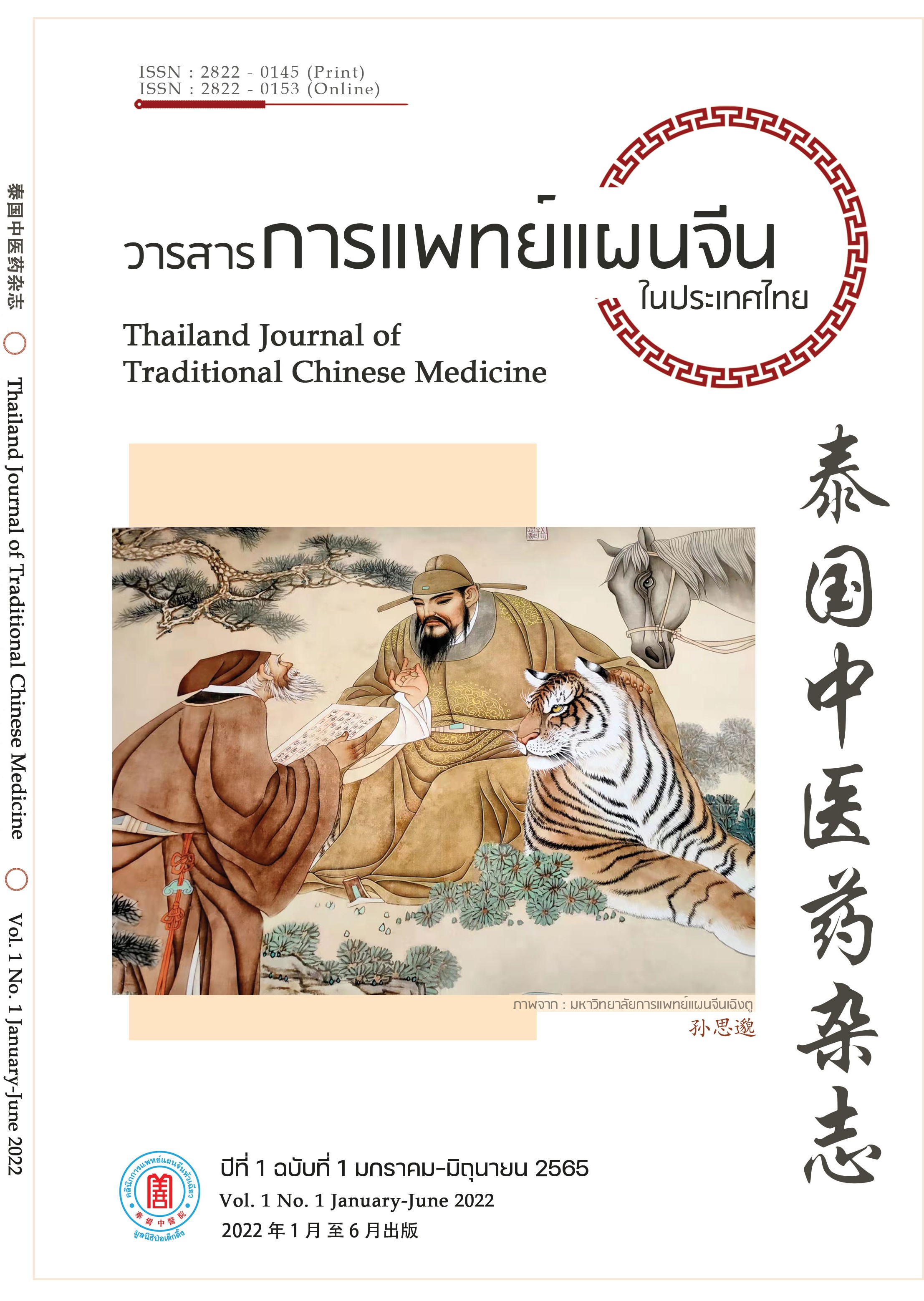ผลของขิงในการลดความเป็นพิษต่อระบบประสาทของปั้นเซี่ย
Main Article Content
บทคัดย่อ
บทความนี้มีวัตถุประสงค์เพื่อศึกษาผลของขิง (Rhizoma Zingiberis) ในการลดความพิษต่อประสาท ของตัวยาปั้นเซี่ย (ลำต้นใต้ดินของ Pinellia ternata) โดยประเมินจากตัวอ่อนของปลาม้าลาย (zebrafish) ที่ย้อมด้วย acridine orange พฤติกรรมของปลาม้าลาย ระยะทางการเคลื่อนที่ ความเร็ว ระดับและการกระจายตัวของการเกิดการตายของเซลล์แบบ apoptosis โดยเปรียบเทียบกลุ่มที่ได้ปั้นเซี่ย (RB) กลุ่มที่ได้ปั้นเซี่ยเผ้าจื้อกับขิง (RPB) และกลุ่มที่ได้ปั้นเซี่ย (RB) เผ้าจื้อกับสาร 6-gingerol (สารสำคัญในขิง) (6-GPB) ผลการศึกษาพบว่า กลุ่ม RB ปลาม้าลายจะมีการเคลื่อนที่และค่าเฉลี่ยของความเร็วสูงกว่ากลุ่มควบคุมอย่างมีนัยสำคัญทางสถิติ (p<0.001) ในขณะที่กลุ่ม RPB และกลุ่ม 6-GPB มีค่าน้อยกว่ากลุ่ม RB ผลการศึกษานี้สรุปได้ว่า ขิงมีส่วนช่วยลดความเป็นพิษต่อระบบประสาทของปั้นเซี่ยได้ และสารสำคัญคือ 6-gingerol
Article Details
เอกสารอ้างอิง
Chinese Pharmacopoeia Commission. Chinese pharmacopoeia. Beijing: The Medicine Science and Technology Press of China; 2020. p.123.
Zhong LY. Studies on irritant component of Pinelliae tuber and the attenuation mechanism and technology of processing. Nanjing: Nanjing University of Chinese Medicine; 2007. (In Chinese)
Rihel J, Prober DA, Arvanites A, et al. Zebrafish behavioral profiling links drugs to biological targets and rest/wake regulation. Science. 2010;327(5963):348-51.
Wang YN, Hou YY, Sun MZ, et al. Behavioural screening of zebrafish using neuroactive traditional Chinese medicine prescriptions and biological targets. Sci Rep. 2014;4(24):5311.
Westerfiled M. The zebrafish book. 4th ed. Eugene: University of Oregon Press, 2000.
Ninkovic J, Bally-Cuif L. The zebrafish as a model system for assessing the reinforcing properties of drugs of abuse. Methods. 2006; (39):262-74.
Carvan MJ, Loucks E, Weber DN, et al. Ethanol effects on the developing zebrafish: neurobehavior and skeletal morphogenesis. Neurotoxicol. Teratol. 2004;(26):757-68.
Jin YP. Study on the mechanism of gingerols antagonize the inflammatory effect of Pinella pedatisecta and Pinellia ternata. Nanjing: Nanjing University of Chinese Medicine; 2016


